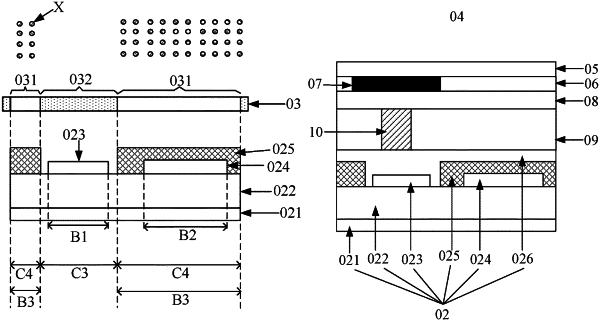| CPC H10K 71/166 (2023.02) [H10K 50/11 (2023.02); H10K 50/824 (2023.02); H10K 71/621 (2023.02)] | 17 Claims |

|
1. A method for manufacturing a light-emitting component, comprising:
forming an auxiliary electrode and a first electrode arranged at an interval on a base substrate;
depositing, by a mask with a hollow area, a light-emitting layer on the base substrate on which the auxiliary electrode and the first electrode are formed, wherein the light-emitting layer covers a whole first electrode, and at least a partial area of the auxiliary electrode is exposed outside the light-emitting layer; and
forming a second electrode on the base substrate on which the light-emitting layer is formed, wherein the second electrode covers at least part of the light-emitting layer and the at least partial area of the auxiliary electrode, and the second electrode is connected to the at least partial area of the auxiliary electrode; and
wherein the light-emitting layer is in direct contact with a lateral surface of the first electrode, and both a lateral surface of the auxiliary electrode and a lateral surface of the light-emitting layer are in direct contact with the second electrode.
|